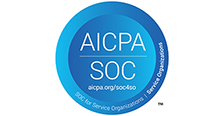
Resources
-
April 20, 2021
Client Alert: A Simplified Pathway to Discharging Student Loan Debt on the Horizon
Written by Kaitlin Shire, Eric Kelner and Michael Shavel
In early February of this year, a group of Democratic senators introduced the Medical Bankruptcy Fairness Act of 2021 or Senate Bill 146 (the “Bill”), which proposes to reform various provisions of the U.S. Bankruptcy Code (the “Code”). Similar bills have been proposed in years prior, but quickly failed in the then Republican-controlled Congress.
As both Chambers are now narrowly controlled by the Democrats, the current proposal has better odds of passing. It is likely for this reason that the Bill’s authors have included more expansive reform measures than in prior bills, including a simplified pathway for a large class of debtors to discharge their student loan debts.
Currently, it is very difficult for a debtor to discharge student loan debt, as these debts are treated differently than others. In order to do so, a debtor must first initiate an adversary proceeding against the lender, in which the debtor must prove that they have an “undue hardship,” which should excuse repayment of the loan.
To complicate matters, there is no universal definition of “undue hardship.” As such, courts employ several tests, which vary by jurisdiction, to determine if the debtor has met that standard. At the adversary proceeding, the debtor must set forth evidence to show that they meet this unclear standard, while the lender may also present its own evidence in opposition. Not only can these proceedings be extremely timely and costly, but they often prove unsuccessful for the debtor, and consequently, many debtors do not even attempt the endeavor.
Previous senate bills have sought to reform the Code and provide an easier pathway for debtors to discharge student loan debt, in addition to other benefits, by creating a class known as “Medically Distressed Debtors.” This proposed class has included anyone who within the three-year period prior to filing bankruptcy has incurred medical debt greater than the lesser of 10% of their adjusted gross income or $10,000.00.
Once the debtor should establish that they fall within this class, by filing a statement of medical expenses and an attestation that they did not incur the debt to fall within this class, they would be entitled to certain protections, including retaining residential equity, waiving the credit counseling requirement, and discharging student loan debt.
The current Bill expands the previous proposed class by broadening the definition of “Medically Distressed Debtors” to include anyone who within the three-year period prior to filing bankruptcy has experienced a change in employment status that resulted in a reduction of wages, salaries, commissions or work hours or resulted in unemployment due to the national emergency declared in light of the COVID-19 pandemic. Consequently, should a debtor have been financially impacted by the COVID-19 pandemic, they would be entitled to discharging student loan debt.
It is worth noting that should the Bill be signed into law, these benefits are limited. First, one would have to have been employed prior to the COVID-19 pandemic. Second, at this time, the benefit only extends to those debtors who file for bankruptcy within three years of the national emergency declared in light of the pandemic. Due to the limited timeframe, it is likely that should the Bill be signed into law, consumer bankruptcy cases will rise in order to meet this deadline. Due to the great impact this could have on debtors, as well as lenders, the Bill is worth following.


